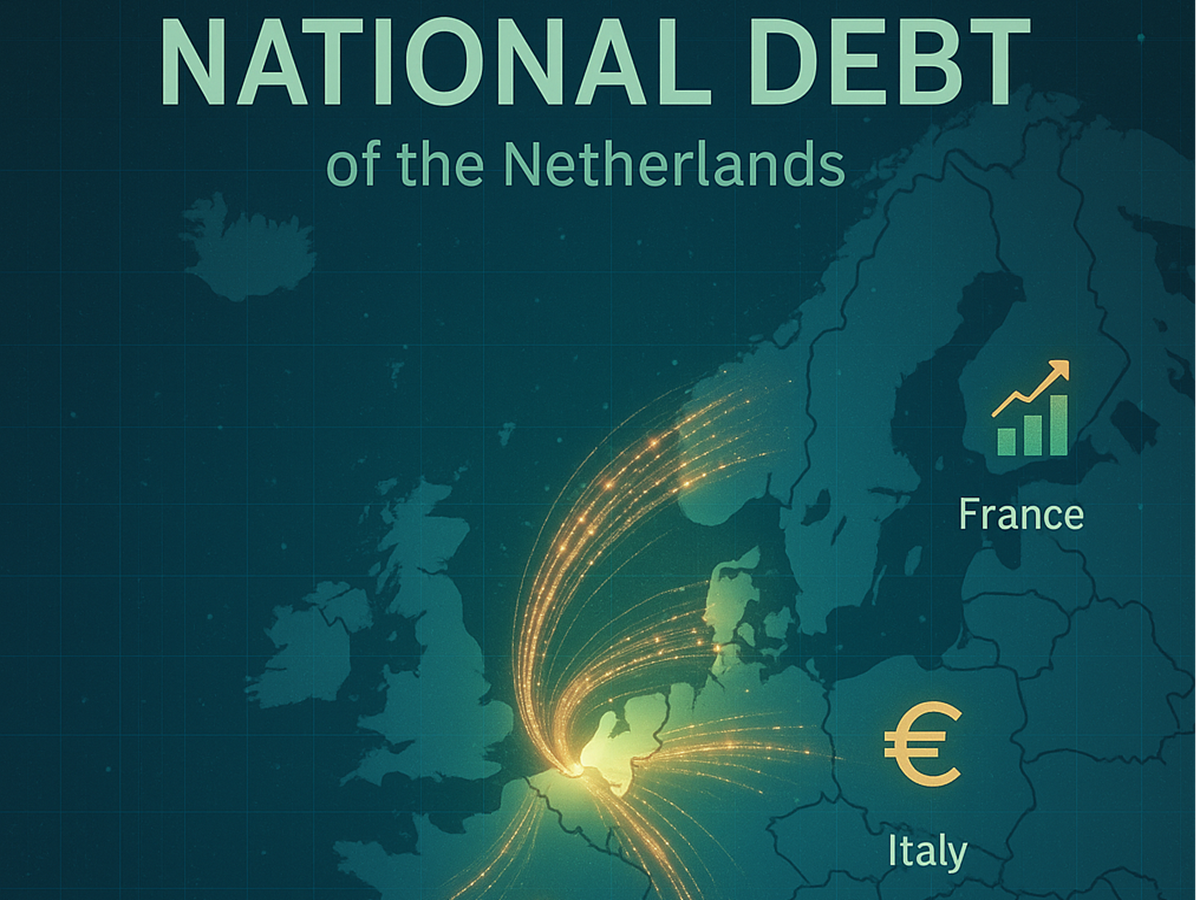Europe’s Hidden Burden: In Some Countries, National Debt Tops €50,000 per Citizen
A Eurostat analysis reveals that in parts of Europe, every citizen effectively carries a debt burden of more than €50,000 — exposing a quieter but striking truth about the continent’s finances.

By the EU Debt Map editorial team
Last updated: October 20, 2025
When national debt becomes personal
Across Europe, public debt is usually discussed in the language of billions — or as neat percentages of GDP. But what if those vast numbers were divided evenly among the people? According to fresh Eurostat data, citizens in several EU member states would each owe more than €50,000 if government debt were shared equally.
The limits of the debt-to-GDP ratio
The debt-to-GDP ratio remains the standard shorthand for fiscal health. It compares a country’s total debt to the size of its economy, offering clues about its ability to pay it back. Yet it also flattens human reality into abstract percentages. A nation can appear stable on paper while its citizens shoulder enormous obligations in real terms.
In early 2025, Eurostat’s figures still ranked Greece, Italy and France near the top in debt-to-GDP, while Estonia, Luxembourg and Ireland sat comfortably lower. But the story shifts dramatically when viewed through a different lens — debt per person.
The numbers behind the people
Dividing national debt by population uncovers a more intimate measure of a country’s fiscal load — one that can surprise even the most disciplined economies.
Top 5 EU countries by debt per person (Q1 2025):
- Belgium — €52,952 per person
- Italy — €49,139 per person
- France — €46,545 per person
- Austria — €42,679 per person
- Finland — €42,234 per person
Here, Belgium and Austria climb higher than expected, while ‘safe haven’ economies such as Ireland and Luxembourg also appear heavier than their modest population sizes might suggest. Wealth, it seems, does not always shield a country from large nominal debts.
Two Europes: visible and hidden risk
Looking closer, Europe’s debt landscape splits into two profiles:
- Solvency-pressure economies: Nations such as Greece and Portugal, where high debt-to-GDP ratios make them vulnerable to growth shocks.
- Hidden-burden economies: Wealthier countries like Ireland, Austria and the Netherlands, where debts appear manageable as a share of GDP — but loom large when measured per person.
As populations age and interest rates remain elevated, those hidden burdens could quietly grow, even without the drama of a debt crisis.
Why this matters
Debt per person transforms public finance from an abstract spreadsheet into a human reality. It reframes national borrowing not just as a macroeconomic metric, but as a generational responsibility. Every bond issued today will, in some form, be carried by tomorrow’s taxpayers.
In the end, both measures matter:
- Debt-to-GDP reveals short-term stability and market confidence.
- Debt per person captures the longer shadow — the scale of what citizens ultimately owe.
Explore the data
See how your country compares on the interactive EU Debt Map, which updates live with new Eurostat releases.
About the author
EU Debt Map Editorial Team
About us · firenature23@gmail.com
Sources: Eurostat government-debt data (Q1 2025) and population statistics as of January 1, 2025.
More articles
Related EU debt and fiscal insights to explore next.

20 Nov 2025
Ranked: The European Countries Where Every Citizen Owes Over €50,000
Forget the Debt-to-GDP ratio for a moment. When we look at the raw debt burden per citizen, a new and surprising map of Europe emerges. We rank the EU-27 by debt per capita.

11 Nov 2025
Can the US Handle More Debt Than Europe?
Several EU countries are already above 100% debt-to-GDP, just like the United States. Yet markets treat US debt very differently. This article explains why.

07 Nov 2025
Europe's Trillion-Euro Question: When Is National Debt an Investment?
As Europe faces the colossal costs of the green and digital transitions, the old rules of austerity are being challenged by a new logic: borrowing not for consumption, but for survival and future growth.

05 Nov 2025
The 'Swedish Wonder': National debt is falling and the live tracker is green
In an EU where most national debts are rising, Sweden is doing the opposite. With a debt ratio of just 34% and a declining counter, we look at how the 'top of the class' manages this outside the Eurozone.

01 Nov 2025
Ticking Up by €118/Second: Is the Netherlands Still Europe's 'Frugal' Leader?
The Dutch national debt is rising by €118 every second. While its 42.7% debt-to-GDP ratio remains well below the EU limit, this live tracker reveals a more complex picture compared to its European neighbors.

25 Oct 2025
Europe’s Debt Thermometer, Q2 2025: Who’s Up, Who’s Down — and Why It Matters
New Eurostat data for Q2 2025 reveals a Europe moving in two directions: while some countries’ debt-to-GDP ratios climbed, others managed to bring them down. Here’s what’s driving the shift beneath the surface.